Overview
The goal of this page update is to provide guidance for editors relevant to lessons learned in handling real-time closures (RTC) and cross-traffic at junctions.
| This information is a draft under development. It should not be considered official guidance. |
The specific challenge addressed by this revision is to overcome a limitation of real time closures (RTCs) which impacts routing to destinations on cross-streets of main roads which are closed and don’t physically allow cross traffic at their intersections, due to events or construction.
In the image below, a long stretch of main road has been closed for a parade. Crossing the parade route is not allowed at the cross-street intersections. The driver is on one side of that parade, and the destination is on the other side. An ideal route would take the driver around the end of the parade route, to approach the destination from the side where it can actually be accessed.
Current wiki guidance is to close only one segment of the two-way cross street (in both traffic directions) on one side of the main closed route. This effectively prevents routing across the closed road in either direction, except in situations like that in the example above, where the destination is on the single closed cross street segment, and on the opposite side of the main closed road from the user. Waze will route the user to the nearer, incorrect, side of the closed route, unable to reach the destination.
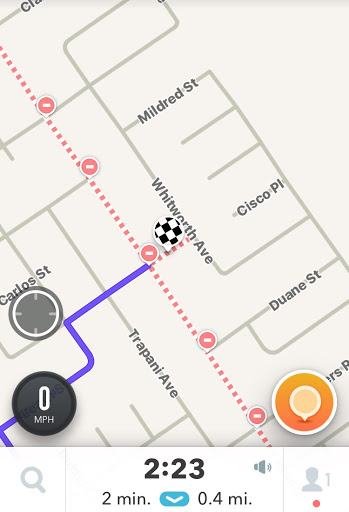
If side-street segments are closed (both directions) on both sides of the main closed road, then the user will be navigated to the correct side of the main closed road for the destination. The purple route line, unfortunately, will end before entering the final destination segment, but this is a much smaller inconvenience than having to find one’s own way to the other side of a long closed route, such as a parade or marathon.

This RTC approach has been tested in real-life closure situations and found to yield superior routing results as compared to the previously recommended method.
Content
Junctions and cross traffic
When adding a Real-Time Closure consider whether any cross traffic will be blocked as well.
Often in work zones and for special events (parades, 5K and 10K road races, marathons, half-marathons, festivals) cross traffic is not allowed at one or more junctions.
It has been observed that Waze will not route through a closed segment; however, it will route on to or off of a closed segment to reach a destination or leave a starting point on that segment. If traffic going across your Real-Time Closure must be blocked at a junction, you will need to close at least one of the cross street segments as well.
- One-way cross street
- Close the cross street s-in segment.
- This prevents traffic from routing through the junction and onto closed s-out segments to reach a destination.
- Two-way cross street
- Close both cross street s-in segments in both directions.
- Closing a single segment will allow routing across the junction to destinations on s-out segments. Closing both segments will prevent routing across the junction when to reach a destination or leave a starting point.
- T-intersections
- Close the cross street s-in segment in the direction approaching the junction.
- This is necessary only to stop routing to destinations on s-out segments of the main closure.
| Click on these illustrations to see them in full size. | |||
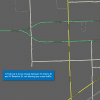 |
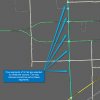 |
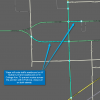 |
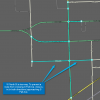 |
Discussion
This proposal is still being drafted prior to open discussion.